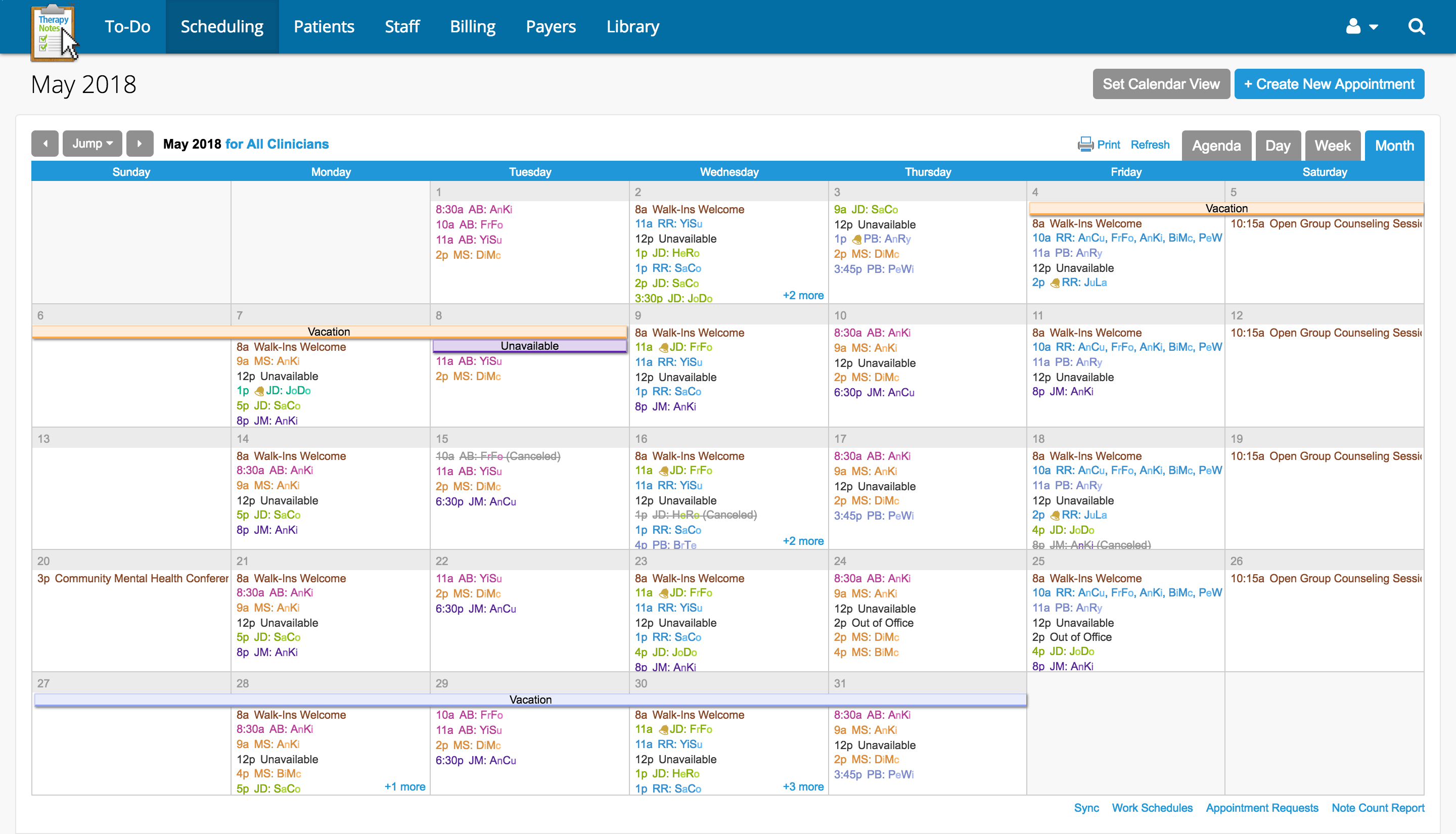When you’re starting a private medical practice, your main goal is to provide optimal patient care. Skill and experience have always been crucial for achieving this goal, of course. But technology has now become another critical requirement for success, thanks to stricter regulations and the increased need for efficiency.
In this article, we discuss one such technology that can help you throughout your practice — the patient tracking system — and how to build one affordably.
Adding his insights is Benedikt von Thüngen, CEO and founder of Sanome, a company whose platform supports early health intervention.
Understanding what a patient tracking system does
A patient tracking system is a technology solution that enables physicians to keep up with patients’ status and progress in their health journeys.
At a minimum, these systems include details on patient demographics, appointment history, and treatment plans. More comprehensive systems may also include analysis tools and patient portal features, but these systems tend to be more expensive.
“A patient tracking system focuses on managing patient flow and helping physicians prioritize and schedule services to optimize patient care,” von Thüngen explains. “It also provides a way to pass on relevant information to other providers in the care pathway — for example, from PCP to secondary care or to a different department.”
Has a patient gone to get their lab testing done? Have they seen the specialist you recommended? Have they been taking their medication as prescribed?
“The system can help quickly answer these important care questions for physicians and other designated parties,” says von Thüngen.
As for patients, von Thüngen notes that patient tracking systems provide a clear idea of what happens next, where they need to be, and when they need to be there.
Benefits
Here are a few business and care advantages that come from implementing a patient tracking system:
- Better healthcare prioritization. Whether you employ a team of physicians and full staff or it’s just you and an administrative assistant, your practice has a finite amount of time and resources to see patients. “Knowing your patient roster, how much time and attention each one needs, and other details stored and reported in the system helps you prioritize care scheduling and whether you can accept new patients at all,” von Thüngen explains.
- Improved patient experience. If you’ve ever called customer support and they’ve bounced you around from department to department, you know the frustrating feeling of repeating the same information over and over. You can save patients from that frustration. “Physicians have access to notes they or their peers have made, so it’s more likely you only have to clarify details rather than starting from the beginning of the health story — and patients appreciate that,” says von Thüngen.
- More efficient operations. With a clear view of care services in the near future, administrators can better support physicians and patients. “Hospital managers, heads of operation, and the like can help coordinate care and make appropriate resources available at the right times,” von Thüngen explains.
Creating a patient tracking system with Jotform Tables
Purchasing a patient tracking system is the easiest way to get started.
“Just be mindful of regulatory and cybersecurity requirements when creating or purchasing a patient tracking system,” says von Thüngen. “Solutions should comply with key privacy requirements such as HIPAA in the U.S. and GDPR in Europe.”
These systems often offer countless features, but they also tend to come with a hefty price tag. And for a small medical practice that likely won’t even use most of these features, it’s important to have an affordable alternative that still gets the job done.
Enter Jotform Tables, a powerful, all-in-one tool you can use to collect, track, organize, manage, and share patient data. Tables complements Jotform, a powerful form builder you can use to create patient information forms. The data you collect from these forms is then stored in the connected Tables database.
You can easily build a patient tracking system for your clinic using Jotform Tables and one of Jotform’s 20 healthcare templates.
Features that enable HIPAA compliance are included in the Jotform Gold plan at no additional cost, so you can collect sensitive patient information affordably, safely, and securely. Learn more about our HIPAA compliance features here.
Consider this patient tracker template, which can help you track a patient’s health as they receive treatment from your clinic. This template lays the foundation for a patient tracking system for you and includes two tabs: Patient Information and Progress Report.
On the Patient Information tab, you can access pertinent demographic details about each patient, such as
- Patient ID
- Name
- Date of birth
- Sex
- Current medications
On the Progress Report tab, you can track each patient’s clinic visits and what kind of treatment they received. List key details such as
- Treatment date
- Attendance
- Your progress notes
- Treatment recommendations
- Next appointment
Integrated with this table template are two form templates: a new patient enrollment form and a patient progress report. Data you enter in the enrollment form is logged in the Patient Information tab; likewise, progress report data is logged in the Progress Report tab.
If you run a paper-free clinic and have a tablet available, you can pull up the enrollment form and have new patients complete and return it to staff to save data entry time. For added efficiency, you can simply direct patients to the form online as a pre-appointment task.
Physicians can pull up and complete the progress report form as they consult with the patient. The form even has an embedded signature field so physicians can authenticate their treatment notes and recommendations.
All Jotform and Jotform Tables templates are customizable, so you can get started with any template that aligns with your clinic goals and simply modify it to suit your specific needs. Add or delete fields, adjust the verbiage, change the look to match your branding, and so on.
See our sample patient tracking system complete with forms and tables here.
Exploring your options: 4 more patient tracking systems
While Jotform is a great option for small- and medium-sized private medical practices, there are other solutions with different sets of features that may suit your specific needs. As you look for the solution that will work best for you, here are a few to consider.
1. Epic
Epic is a cloud-based health information technology and electronic health record (EHR) solution that offers a full suite of advanced features. It was built for hospitals but also can address the needs of clinics.
Features
- Dynamic scheduling
- Revenue cycle automation
- Patient portal
- Capacity planning
Pricing
- You must contact Epic for a quote.
2. Oracle Health
Oracle Health offers several products, including an EHR solution, a patient portal, and a finance and operations solution.
Features
- Scheduling
- Patient intake
- Patient tracking
- Patient portal
Pricing
- You must contact Oracle Health for a quote.
3. TherapyNotes
TherapyNotes is an EHR designed specifically for behavioral health professionals that offers practice management and billing solutions.
Features
- Scheduling
- Telehealth
- ePrescribe
- Billing
Pricing
- Solo (for solo practitioners or new practices) costs $49 per month for one user.
- Group is $59 per month for the first clinician and $30 per month, per additional clinician, with an unlimited number of non-clinical staff.
- Enterprise (30+ users) follows the same pricing as Group but includes a designated account manager.
4. SimplePractice
SimplePractice is practice management software tailored to the needs of health and wellness professionals such as speech-language pathologists, physical therapists, and mental health professionals.
SimplePractice and TherapyNotes are very similar options. For a more in-depth look at these two products, read this comparison article.
Features
- Scheduling
- Insurance claim filing
- Client portal
- Website builder
Pricing
- Starter begins at $29 per month and includes unlimited clients, paperless intakes, a client portal, and basic documentation options. You can add telehealth for $15 per month.
- Essential starts at $69 per month and includes appointment reminders, telehealth, secure client messaging, custom treatment plans, and automated payment report recording. You can add the Wiley Treatment Planner for $15 per month.
- Plus starts at $99 per month and includes calendar syncing, the Wiley Treatment Planner, and the ability to add billers, supervisors, and schedulers to your account for free. You can add clinicians for $59 per month, per person, and a practice manager for $39 per month, per person.
- Plus (Group Practice) starts at $158 per month and includes two clinician accounts, though you can add more for $59 per month, per clinician.
Tackling patient tracking and so much more with Jotform Tables
Jotform Tables has a ton of features that make it the perfect fit for small to midsize medical practices:
- Collaboration. Collaborate with staff and other physicians in one space, while also controlling who has access to what information.
- Data collection. Collect important data like patient demographics and physician notes using customized online forms — submissions will automatically appear in your Tables database.
- Design. Build tables easily without any coding by using prebuilt column types such as text box, phone number, checkbox, lookup, and attachment.
You can also create a patient tracking system and conquer a number of other practice management use cases using one of our templates. Here are a few examples:
- The vaccination record form helps you track patient vaccinations.
- The medication list template helps you record information about prescription medications, over-the-counter drugs, supplements, and similar medicinal consumables.
- The BMI tracker helps you calculate and monitor body mass index.
Get started with one of our 20 healthcare table templates today.
Photo by Tima Miroshnichenko





















































Send Comment: